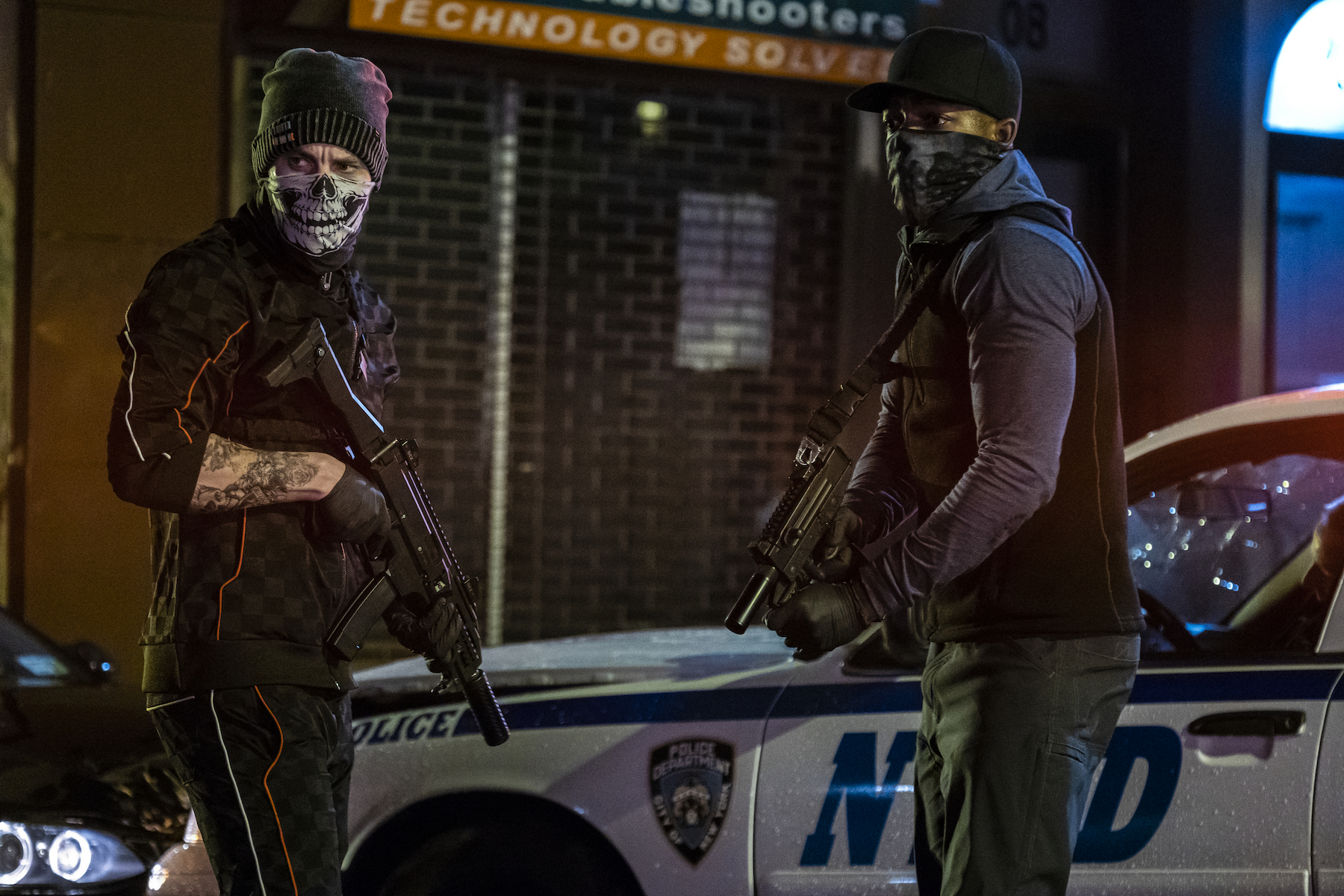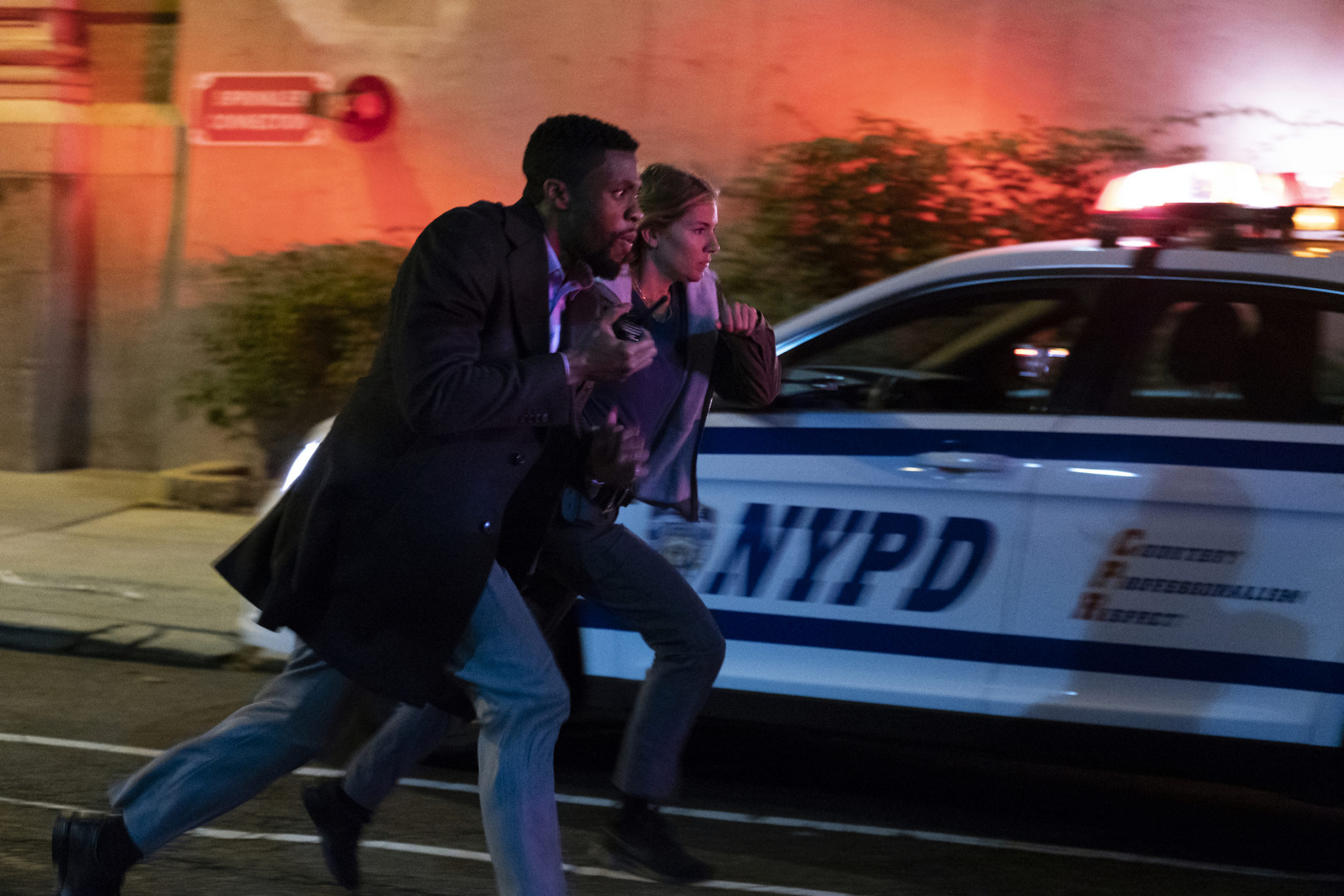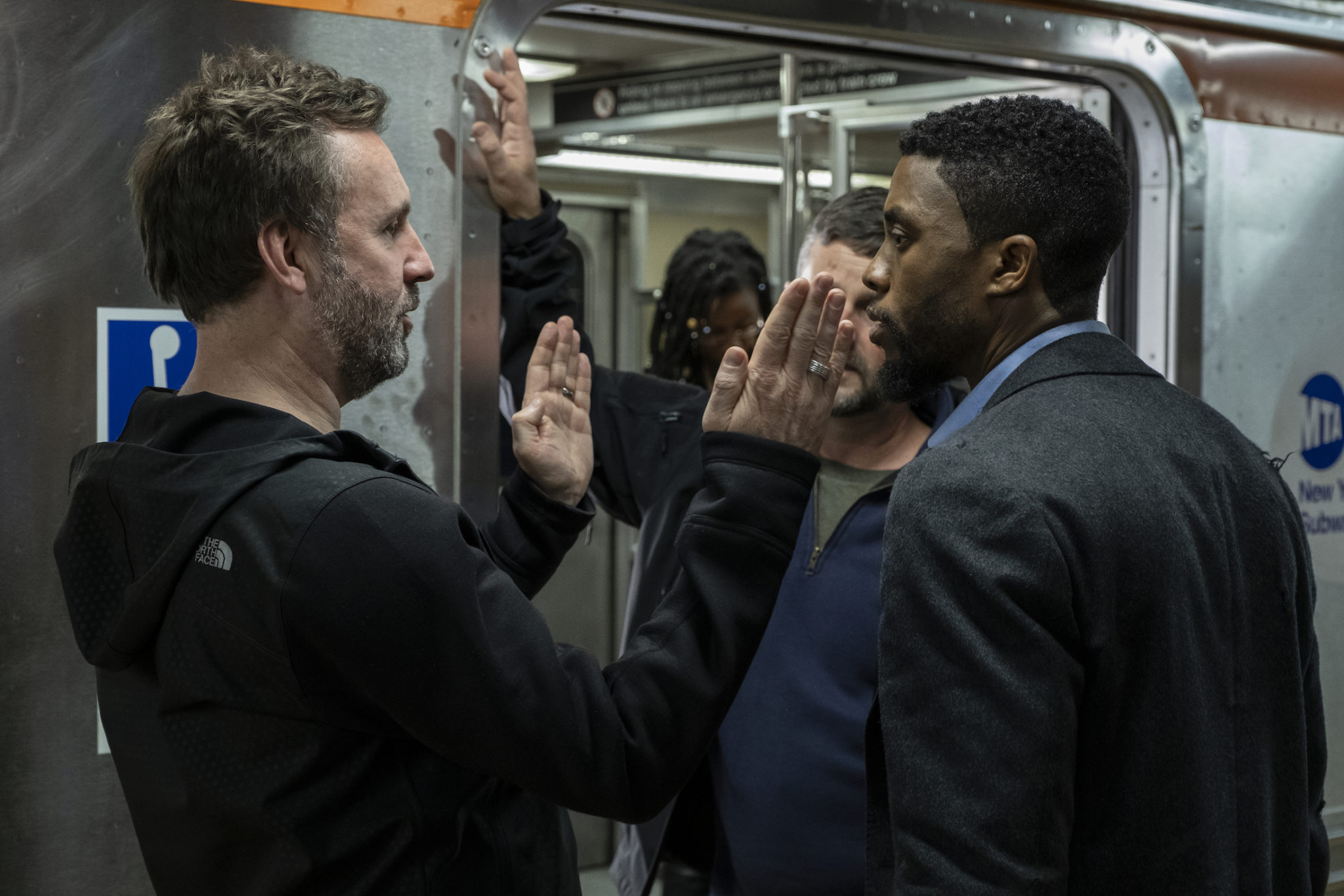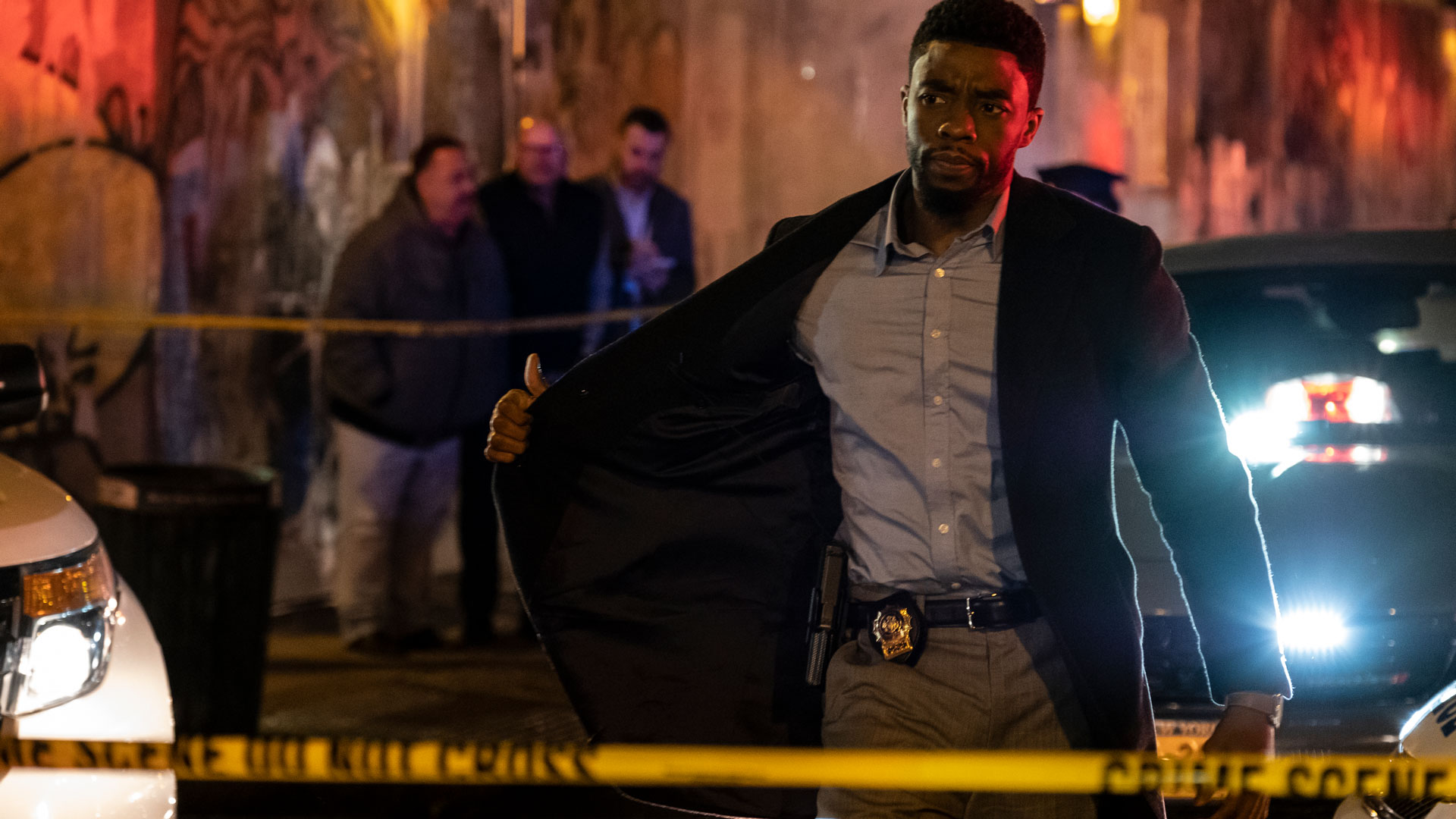Irish director Brian Kirk, best known for his work on Luther and Game of Thrones, replaced battling Starks and Lannisters with good and bad cops in the newly released police thriller 21 Bridges. The bridges of the title refer to the total set of entry and exit points in and out of Manhattan that are shut down as two ferocious cop killers remain at large. Shot mostly at night in Philadelphia, which stands in for New York City, the film has a look reminiscent of gritty police dramas from an earlier era.
Cinematographer Paul Cameron, familiar with shooting in Philly’s streets and alleyways (Dead Man Down) and also with nonstop nocturnal action (Collateral, for which he and Dion Beebe shared a BAFTA), chose the full-frame Sony Venice after discovering its potential on a shortform project. His recent credits include episodes of HBO’s Westworld, including shooting the first episode of the upcoming third season slated for 2020 with co-creator Jonathan Nolan, and also directing episode four.
We spoke to Cameron about his lens and lighting choices — including one he helped invent — and why he feels cinematographers are entering a potentially game-changing period of artistic expression thanks to larger-format cameras.
StudioDaily: Why was the full-frame Sony Venice the right camera for this film?
Paul Cameron: I shot a short film for my wife, Laura Stabilini, right after the Sony Venice first came out. I shot it with full-frame lenses, the Zeiss Supremes, which I like quite a bit, and I just fell in love immediately with the larger sensor and the full-frame lenses. It had that shallow depth of field in the wide shots and gave me more of a chance to do a little selective focus with the larger image. It was that combination on that short film, and also on commercials, where I was doing some color-correction with some DI colorists, and I found that the camera had a much more comfortable color space for me. I was getting the results I really wanted. I’ve been shooting with the Alexas for quite some time, but I started gravitating toward the Venice color space and sensor. When 21 Bridges came up, I wanted to shoot 6K 2.39 and ended up shooting 4K 2.39:1. I was using these brand new full-frame Servicevision Scorpio 2x anamorphics, which are lightweight and fast and are kind of a hybrid between a full-frame and an anamorphic lens. I did some tests at night and was surprised. Brian Kirk, the director, showed up, and when we both looked at the images with the Scorpios, we were getting a certain halation and energy to the lenses that we really liked. With a film like this, which features a lot of police lights, there was a lot of opportunity to play with that. But also because we knew we were going to have a lot of Steadicam and rigs, we wanted lenses that were fast and lightweight.

Taylor Kitsch (left) as Ray and Stephan James as Michael are on the run after taking down a handful of cops during a drug deal gone bad.
What makes the Scorpios unique?
I think the wider anamorphics have a closer focus than the anamorphics we normally shoot with. I’ve shot a lot of movies with Panavision anamorphic lenses, so when we made the decision to shoot with Sony and go that route, I was surprised to find that the Scorpios had a closer focus on the wide angle, and that’s something we all struggle with in anamorphic: you get to a place where you go closer with the camera but then you hit up against minimum focus, so you go to 65 or 75mm, and the minimum focus of that lens for the same shot, and through the next two lenses it’s the same thing. You just can’t get closer. But these Scorpios let us get a little closer on a little wider lenses. We wanted to be intimate with Chadwick (Boseman), our protagonist, when we could.
What could you do with full frame that you couldn’t if you had shot in Super 35?
I really think it comes down to the color space. There’s still so much about shooting film that’s so gorgeous that we’ve been struggling with this evolution of sensor size. Even though we were told that Super 35 was the digital equivalent of film, it just never had the same feel or resolution. After these full-frame sensors arrived it was the first time, outside of the Arri Alexa, that I truly felt, “Now there’s a technology in place that is showing some hope.” On the digital timeline, it’s been a decade of trying to be as good as film. It took film 100 years to get to an elegant place, so suddenly we have 10 years of digital when the technology just didn’t ever develop to that next level. Before that, there was always this kind of pressure on Kodak and Fuji to come up with a new film stock, with more boutique colors, and then I feel like we just went into a resolution race for a full decade with digital. The sensors weren’t changing that much and the manufacturers weren’t trying to do anything more than be almost as good as film. This new large-format era really started with the Arri Alexa 65s. We all thought, “OK, that’s what digital is supposed to look like.” But then you had the massive data problem, which is why I think the new era of full-frame has been a good compromise for the industry. The curve is really about how do you use your lenses, your optics, your depth of field with a certain technology, and I felt that for a decade, people were just like, “Just ND [filter] it down [and] shoot it wide open. Digital looks good that way.” There are a lot of cinematographers who have created a lot of great films not that way, as well, but now I think we’re kind of like on a new frontier. When I was shooting that short for my wife in full frame with a 25mm [Zeiss] Supreme Prime on there, I remember being wide open on the lens and doing a shot of a mother and her boy in an old diner. Everything in the foreground and background fell out. I’d never been able to use any lens wide open and get that effect before. New projects, like The Mandalorian, where they’re shooting really large format and wide open, and getting really shallow depth of field, is when it gets interesting for me. Cinematographers expand as artists when they are given these tools.

Chadwick Boseman and Sienna Miller, as NYPD cops Andre Davis and Frankie Burns, in pursuit of the perps.
How did you and Brian Kirk approach the overall look of the night shots, when the film’s primary action takes place?
When he called me to do the film he said he’d love to give it as much of a Sidney Lumet, old-school feel as possible but that the studio wanted a much more commercial look. Brian is a real cinephile and has a deep respect for cinematography in general. And I thought, well, I could at least lean toward the old color temperatures of New York streetlights, like in the world of Taxi Driver, and use metal halide and mercury vapor [lending a blue-green tint]. That was a color scheme I’ve shot films with before but now all of our urban environments are going LED and white now, but Philadelphia still had a fair amount of sodium [with a pinkish-orange glow] and mercury vapor streetlights. I’d also developed some lights, called T Pars, about 15 years ago with a gaffer where we actually put in high-powered sodium and metal halide bulbs in movie fixtures that were run off of a very low ampage. They were a good fit for this film. I was able to use more Condors, with less generators, and use the real color temp. That’s something I really enjoyed about shooting this film — giving a slightly older street look to it and having color separation with the orange and green.
What specifically led you to develop the T Pars?
I was shooting a film at the time called Man on Fire, starring Denzel Washington and directed by Tony Scott, and my gaffer and I were tired of looking at them line up all the HMIs in the morning that were waterlogged from serious rain, and the ballasts didn’t work. So we thought, let’s design a Tungsten Par that would have some power to it that we could gel and use for night lights. Then we thought, why can’t we put a high-powered metal halide or high-powered sodium light in it? So we did. They looked great and had a lot of punch. I think a lot of cinematographers struggle with trying to create a sodium-like look, apricot with a little green, and everybody has their own special way of doing that in camera. But I think there’s nothing like using the real source for the color temperature you want.
Except for establishing shots featuring recognizable New York landmarks, Philadelphia stands in for New York City. Did shooting in Philly make your life easier or more challenging?
I think Philly stands in really well for New York and you can also mix crew from New York and Philadelphia very easily, given its location. But it’s just easier to get locations, like the exterior of that wine bar and restaurant where the initial crime takes place. To be able to lock that up for five nights anywhere in New York would be very difficult. And in Manhattan? It just wouldn’t happen. The interesting thing for this film and for the director, we probably spent as much time scouting in New York first to find what those locations should look and feel like. Then we’d go find something in Philly that feels like here. There were many train rides back and forth but it’s great when a director says, “I’ve got to believe it’s New York.” I think we did a pretty good job of tying it in.
There are some nice overhead shots in the film. But isn’t it hard to get clearance for drones these days, especially in crowded cities?
That’s a real dilemma, but we have a bunch of drone shots in the film. Often times we have to use a DJI Inspire drone, which is much smaller, as opposed to one that can hold a bigger cinema camera. I was actually able to mix the two, so there are some Venice aerials. I did a bunch of tests with the smaller drone and it’s a great tool. I tend to use it for unusual angles and it definitely adds a certain energy. You can get a moving camera over Chinatown that you just couldn’t get with a crane or a car. But we also used the TechnoCrane as much as we could and probably on the exterior of that wine bar than anywhere else.
What kind of rigs, beside Steadicam, did you use to follow the actors during the chase scenes?
I designed a rig where you basically remove the camera and gimbal system from the DJI Inspire. And then we had some stunt guys come in that had essentially done the same things with their camera, which they called the Work Cam. It was basically like a little graphite box with the DJI Zenmuse X7 camera on the outside of it. Running shots are always frustrating for me because you can never keep up with anybody with Steadicam. Maybe you can with an electric cart, but not when you’re jumping turnstiles and going up and down stairs. So basically I got the stunt guys, who are like collegiate athletes, to carry the cameras and lead ahead of the actors during chase scenes. They really move. We operate the camera with remote wheels, so I could control it while they were running.

Director Brian Kirk with Chadwick Boseman on set inside a Philly subway station that stood in for New York.
Speaking of turnstiles, how did you film the climactic subway scene?
Those were real Philadelphia subway stations and platforms. The action inside the train car was actually all bluescreen. Having recently shot The Commuter, I had the moving of the light rig down. I think we also got plates from the folks we used for that film for outside the windows. Sure, when you’re really going down a New York subway tunnel the lights don’t change that much. But I wanted to heighten that scene for Stephan James, who plays Michael, and for Chadwick, and finally for Sienna Miller’s entrance. We definitely wanted to have some drama in the lighting. We shot the whole thing in one night.
What makes a scene memorable for you, and do you have a favorite?
For me, it’s not so much the visual components as it is the dramatic elements. So in terms of drama, it’s probably inside of the subway car when Stephan and Chadwick face off. That scene, with its twist at the end, is about finding a deeper code of honor and truth, and it was very moving to see it performed by such great actors.
Crafts: Shooting
Sections: Creativity
Topics: Project/Case study Q&A dji inspire mercury vapor sodium Sony t par venice zenmuse x7
Did you enjoy this article? Sign up to receive the StudioDaily Fix eletter containing the latest stories, including news, videos, interviews, reviews and more.









